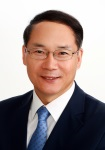Day 3 :
Keynote Forum
Jaehwan Kim
Inha University, South Korea
Keynote: Recent advancement of renewable smart materials
Time : 09:00-09:35

Biography:
Jaehwan Kim has joined the Department of Mechanical Engineering at Inha University, Korea in 1996, where he serves as Inha Fellow Professor. He is a Fellow of The Korean Academy of Science and Technology, National Academy of Engineering of Korea and Institute of Physics. He is an Associate Editor of Smart Materials and Structure as well as Smart Nanosystems in Engineering and Medicine and Editor of International Journal of Precision Manufacturing and Engineering and Actuators. He has been the Director of Creative Research Center for EAPap Actuator. Recently, he has started another Creative Research Center for Nanocellulose Future Composites. He has first discovered cellulose as a smart material, which can be used for sensors, actuators and electronic materials. His research interests are smart materials, structures and devices; biomaterial based smart materials, cellulose, electroactive polymers, power harvesting, biomimetic actuators, biosensors, tactile sensors and flexible electronics. He has published more than 250 prestigious journal papers, 280 international conference papers, more than 30 patents.
Abstract:
Sustainability is essential in future technologies to harmonize with our living environment. Renewable materials can maintain our resources from the environment so as to overcome degradation of natural environmental services and diminished productivity. Cellulose is one of the nature’s most abundant natural polymers, the main chemical components of wood and plants. It is a renewable material that recycles to nature by composting with short period of time. The use of renewable materials is essential in future technologies. This presentation reviews recent advancement of renewable materials for smart material applications, including cellulose and its sensors, actuators and energy storage applications. To further improve functionality of renewable materials, hybrid composites of inorganic functional materials are introduced by incorporating carbon nanotubes, titanium dioxide and tin oxide conducting polymers and ionic liquids. Since renewable materials have many advantages of biocompatible, sustainable, biodegradable, high mechanical strength and versatile modification behaviors, more research efforts need to be focused on the development of renewable smart materials.
Keynote Forum
Yongmei Zheng
Beihang University, China
Keynote: Bioinspired gradient surfaces: From design to functions on wettability
Time : 09:35-10:10

Biography:
Yongmei Zheng is currently a Professor at School of Chemistry and Environment, Key Laboratory of Bio-inspired Smart Interfacial Science and Technology of Ministry of Education in Beihang University, China. Her research interests are focused on bioinspired surfaces with gradient micro- and nanostructures to control dynamic wettability.
Abstract:
Biological surfaces provide endless inspiration for design and fabrication of smart materials. It has recently been revealed to have become a hot research area in the materials science world. The capture silk of the cribellate spider Uloborus walckenaerius collects water through a combination of multiple gradients in a periodic spindle-knot structure after rebuilding. Inspired by the roles of micro- and nanostructures (MNs) in the water collecting ability of spider silk, a series of bioinspired gradient fibers has been designed by integrating fabrication methods and technologies such as dip-coating, Rayleigh instability break-up droplets, phase separation, strategies of combining electrospinning, electrospraying and web-assembly. Through such fabrications, spindle-knot/joint structures can be tailored to demonstrate the mechanism of multiple gradients (e.g., roughness, smooth, temperature-respond, photo-triggering, etc.,) in driving tiny water drops. A water capturing ability can be developed by the combination of slope and curvature effects on spindle-knots on bioinspired fiber. The heterostructured fibers have been fabricated by electrohydrodynamic strategies are intelligently responding to environmental humidity. A temperature-responsive fiber can realize the directional transport of droplet effectively. The multi-geometric gradient fiber achieves the droplet target transport in a long range along as-designed bioinspired gradient fiber. In contrast, biological surfaces such as plant leaves and butterfly wings with gradient structure features display the effect of water repellency. Smart bioinspired surfaces can be fabricated by combining machining, electrospinning, soft lithography and nanotechnology. The gradient surfaces exhibit robust transport and controlling of droplets. These bioinspired gradient surfaces would be promising applications into anti-icing, liquid transport, anti-fogging/self-cleaning, water harvesting, etc.
